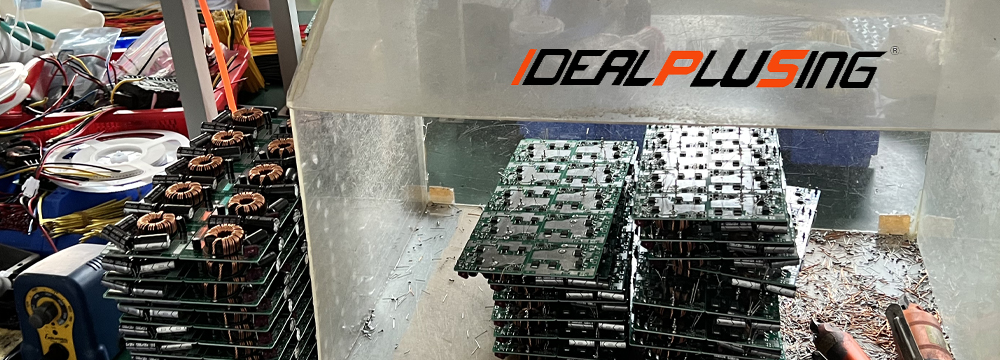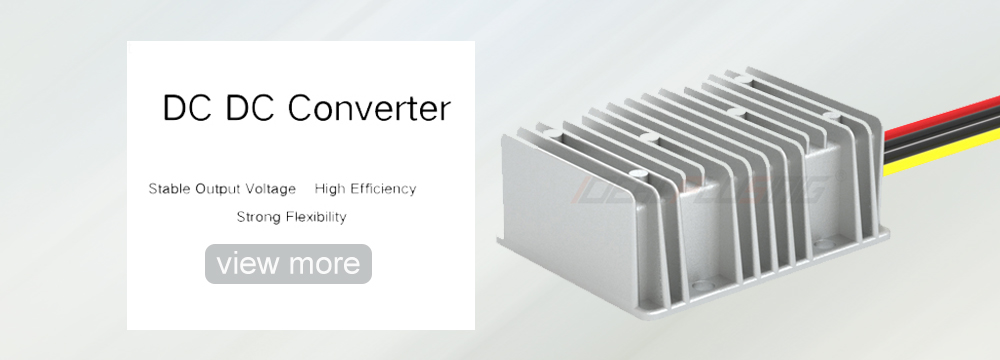In the field of electronic engineering, DC/DC converters are key components in power supply design, used to convert one DC voltage to another. Choosing the right DC/DC converter topology is crucial to ensuring system performance, efficiency, and reliability. This article will explore how to make the "best" dc/dc converters topology selection from the perspectives of the characteristics, application scenarios, and selection criteria of different topologies.

Overview of DC/DC Converter Topologies
There are many DC/DC converter topologies, including Buck, Boost, Buck-Boost, Flyback, Half-Bridge, and Push-Pull. Each topology has its own unique advantages and applicable scenarios.
1. Buck Converter
The buck topology is the model of almost all DC/DC buck circuits. It uses a switch tube, an inductor, a freewheeling diode, and an output filter capacitor to achieve voltage reduction. When the switch tube is turned on, the current stores energy through the inductor; when the switch tube is turned off, the energy in the inductor is released to the load through the freewheeling diode.
This topology is characterized by an output voltage lower than the input voltage, which is suitable for application scenarios such as mobile phone chargers and laptop power supplies that require voltage reduction.
2. Boost Converter
The boost topology is used to increase the input voltage to a higher voltage. It mainly consists of an inductor, a switch tube, a diode and an output filter capacitor.
When the switch tube is turned on, the current passes through the inductor; when the switch tube is turned off, the induced voltage across the inductor is superimposed with the input voltage to power the load together. This topology is suitable for applications such as LED drivers and solar panels that require increased voltage.
3. Buck-Boost Converter
The buck-boost topology can simultaneously increase and decrease the voltage, that is, the input voltage can be greater than, equal to or less than the output voltage. It has high conversion efficiency and small output fluctuations, and is suitable for applications such as electric vehicles and solar chargers that require voltage conversion.
4. Flyback Converter
The flyback topology uses a transformer to achieve voltage conversion and has electrical isolation. It is widely used in power adapters, LED lighting and other fields. The flyback converter has a simple structure, but is usually suitable for low-power applications, and it is difficult to achieve a high level of efficiency.
5. Half-Bridge Converter
The unilateral flyback topology consists of two switch tubes, a pair of diodes and an output filter capacitor, which is used to convert the input voltage into the output voltage. It is characterized by high conversion efficiency and small output fluctuation, and is suitable for applications requiring higher output power.
6. Push-Pull Converter
The push-pull topology uses two switch tubes, which are turned on alternately to generate the output voltage. This topology is usually used in applications requiring higher output power, such as electric vehicles, industrial control, etc. The push-pull converter has high conversion efficiency and good dynamic response capability.
Standards for selecting DC/DC converter topology
When selecting a dc-dc converters topology, the following key factors need to be considered:
1. Input and output voltage range
First, the appropriate topology needs to be determined based on the input and output voltage requirements of the system. If the system needs to reduce the voltage, the buck topology should be selected; if the voltage needs to be increased, the boost topology should be selected; if the voltage may increase or decrease, the buck-boost topology should be selected.
2. Conversion efficiency
Conversion efficiency is an important indicator for measuring the performance of a isolated dc/dc converter. Generally speaking, switching DC/DC converters are more efficient than linear regulators. When choosing a topology, topologies with high-efficiency conversion capabilities, such as buck, boost, and buck-boost topologies, should be given priority.
3. Cost and reliability
Cost and reliability are also important factors to consider when choosing a topology. There are differences in cost and reliability among different topologies.
For example, although the flyback topology is simple in structure, it is usually suitable for low-power applications and it is difficult to achieve a high level of efficiency; while the push-pull topology has high conversion efficiency and good dynamic response capabilities, but the cost is relatively high. Therefore, when choosing a topology, it is necessary to weigh the specific needs and budget of the system.
4. EMC
Electromagnetic compatibility is an issue that cannot be ignored in the design of electronic equipment. Different topologies also perform differently in terms of electromagnetic compatibility. When choosing a topology, it is necessary to consider its impact on the electromagnetic compatibility of the system to ensure that the system can work properly and meet the requirements of relevant standards.
5. Heat dissipation and packaging
Heat dissipation and packaging are also factors to consider when choosing a topology. Some topologies will generate a lot of heat during operation, and effective heat dissipation measures need to be taken; at the same time, the packaging form will also affect the overall size and layout of the system. Therefore, when choosing a topology, it is necessary to comprehensively consider the needs of heat dissipation and packaging.
Future development trends
With the advancement of technology and the continuous expansion of applications, DC/DC converter topologies are also constantly developing and innovating. In the future, we can expect the following development trends:
Application of high-efficiency materials: The introduction of new semiconductor materials such as GaN and SiC will significantly improve the switching speed and efficiency of dc dc isolated converter, reduce energy loss and heat generation.
Intelligent control: dc-dc converters with integrated digital controllers will be able to achieve more accurate and flexible voltage and current regulation, while providing fault detection and self-protection functions to improve system reliability and safety.
Modular design: Modular design will make dc-dc buck boost converter easier to integrate and maintain, and also easier to customize and expand according to actual needs.
High power density: With the continuous miniaturization and lightweight of electronic equipment, the high power density requirements of dc-dc converters are also increasing. Future dc-dc converters will pay more attention to optimizing layout and heat dissipation design to achieve higher power density and smaller size.







